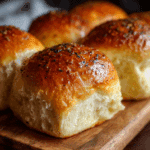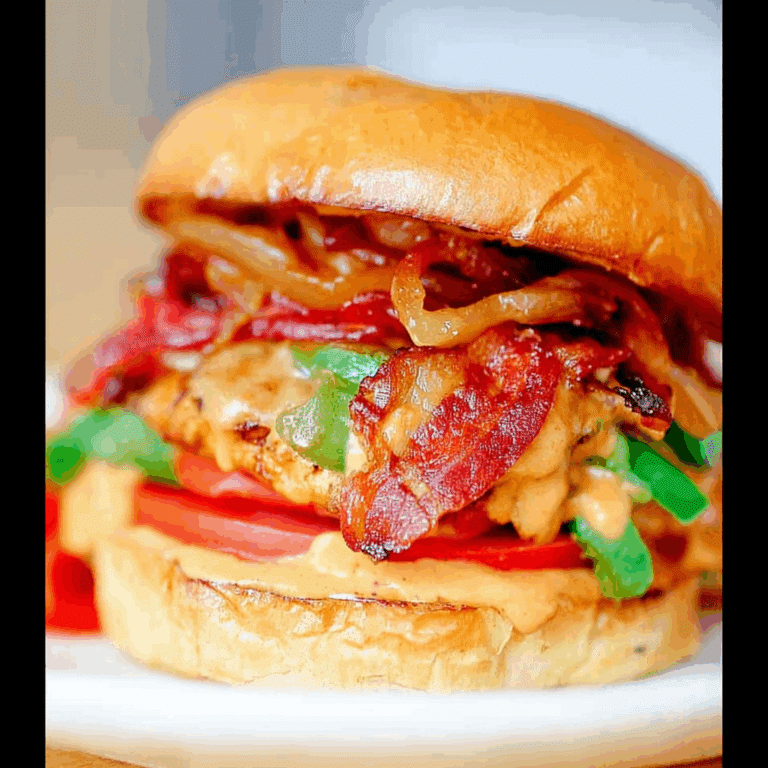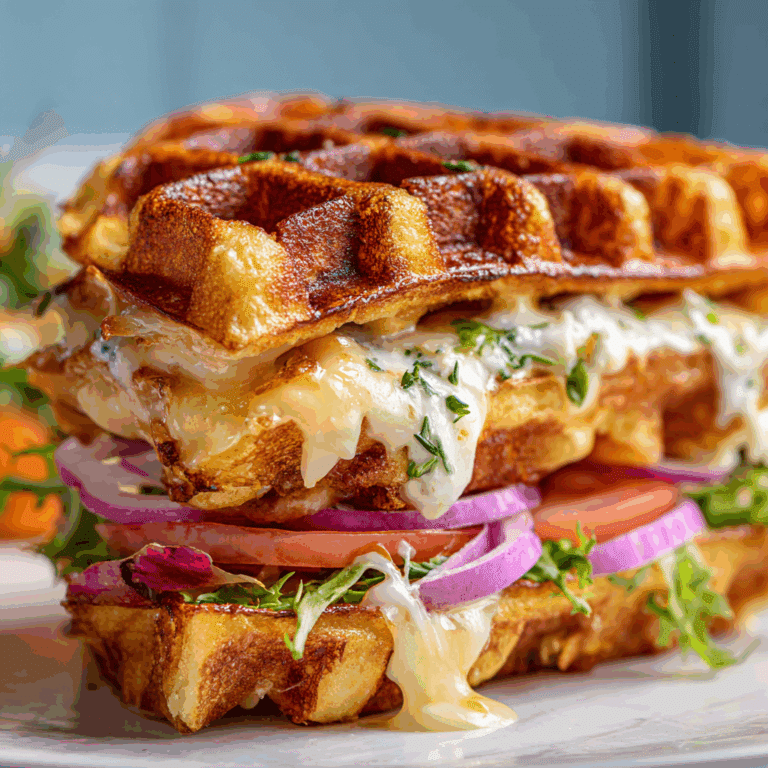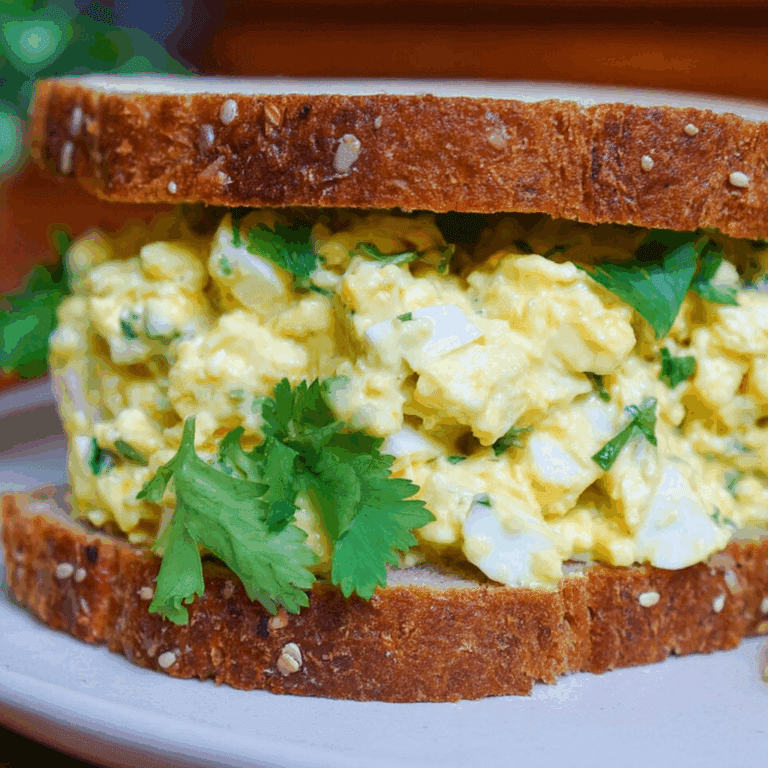Easy Homemade Dinner Buns for Cozy Meals

If you’ve ever dreamed of perfect, soft, and fluffy bread that hugs your favorite dinner dishes just right, these Homemade Dinner Buns are exactly what you need. Crafted to be simple yet irresistibly delicious, these buns elevate any family meal or cozy sandwich with their tender crumb and golden crust. Whether you’re serving them fresh out of the oven or using them to soak up rich sauces, these Homemade Dinner Buns offer a warm, comforting touch to your dinner table that everyone will love.
Why You’ll Love This Recipe
- Effortless Comfort Food: These buns provide a homemade touch without complicated steps, perfect for relaxed weeknight dinners.
- Soft and Fluffy Texture: The buns have that ideal light yet sturdy crumb that holds up to all your fillings.
- Versatility: Perfect for everything from sandwiches to dinner sides, adapting to any meal style.
- Family Friendly: Made with basic ingredients your pantry likely has, great to bake with kids or friends.
- Enhanced Flavor: Slightly sweet and buttery, these buns add flavor and aroma that invite everyone to the table.
Ingredients You’ll Need
Gathering simple, staple ingredients ensures these Homemade Dinner Buns come together beautifully every time. Each ingredient contributes to the taste, texture, and color, making your buns soft, fluffy, and golden.
- All-Purpose Flour: The backbone of the bun, providing structure and a tender crumb.
- Active Dry Yeast: The magical leavening agent that creates the airy texture inside the buns.
- Warm Milk: Offers richness and activates the yeast without killing it.
- Butter: Adds moisture and a subtle buttery flavor while keeping buns soft.
- Sugar: Sweetens just enough to balance the flavors and helps the yeast bloom.
- Salt: Enhances all the flavors and strengthens the dough structure.
- Egg: Adds richness, color, and helps create a tender crumb.
Variations for Homemade Dinner Buns
Feel free to customize these homemade dinner buns to suit your taste or dietary preferences. The recipe is easy to adapt, making it perfect whether you want a healthier option or a flavor twist.
- Whole Wheat Version: Substitute half or all of the all-purpose flour with whole wheat for a nuttier flavor and extra fiber.
- Garlic Herb Twist: Add minced garlic and mixed herbs to the dough or brush buns with garlic butter after baking for an aromatic boost.
- Dairy-Free Option: Replace butter with coconut oil and milk with almond or oat milk to make them vegan-friendly.
- Sweet Dinner Buns: Increase sugar slightly and add cinnamon or nutmeg for a sweet, dessert-like option.
- Seeded Tops: Sprinkle sesame, poppy, or sunflower seeds on top before baking for extra crunch and visual appeal.

How to Make Homemade Dinner Buns
Step 1: Activate the Yeast
Begin by warming the milk until it’s just about body temperature—warm enough to wake the yeast but not so hot it kills it. Stir in the sugar and yeast, then let it sit for 5 to 10 minutes until foamy and bubbly, signaling active yeast ready to work.
Step 2: Mix the Dough
In a large bowl, combine the flour and salt. Make a well in the center and pour in the activated yeast mixture, melted butter, and beaten egg. Gently mix together with a spoon or your hands until it starts coming together into a shaggy dough.
Step 3: Knead Until Smooth
Transfer the dough onto a lightly floured surface and knead for about 8 to 10 minutes until smooth, elastic, and slightly tacky. Proper kneading develops gluten which gives the buns their soft, chewy texture.
Step 4: First Rise
Place the dough in a lightly oiled bowl, cover with a clean kitchen towel or plastic wrap, and let it rise in a warm spot until doubled in size, about 1 to 1.5 hours. This step creates that perfectly fluffy interior.
Step 5: Shape the Buns
Gently punch down the risen dough and divide it into equal portions. Shape each portion into a smooth ball by tucking edges underneath. Arrange the buns on a lined baking sheet, spaced to allow expansion.
Step 6: Second Rise and Bake
Let the buns rise again for about 30 to 45 minutes until puffy. Meanwhile, preheat your oven to 375°F (190°C). Optionally, brush tops with melted butter or an egg wash for a golden shine. Bake for 15 to 18 minutes until tops are golden brown.
Pro Tips for Making Homemade Dinner Buns
- Warm Ingredients: Use warm milk and melted butter to promote yeast activation and easy dough mixing.
- Don’t Skip Kneading: Proper kneading is key for gluten development and soft texture.
- Watch the Dough, Not the Clock: Rising times vary depending on room temperature—look for doubled dough, not fixed timing.
- Avoid Overcrowding: Leave enough space between buns for expansion to prevent sticking during baking.
- Egg Wash Magic: Brush buns with egg wash for shiny, golden crusts or just butter for a softer finish.
How to Serve Homemade Dinner Buns
Garnishes
For a simple yet irresistible touch, sprinkle freshly chopped herbs like parsley or chives on top after baking. Seeds such as sesame or poppy add crunch and visual appeal. A light brush of garlic butter immediately after baking turns these buns into an aromatic treat.
Side Dishes
Homemade Dinner Buns pair wonderfully with hearty soups, such as creamy tomato basil or beef stew, soaking up all those rich flavors. They’re perfect alongside roasted veggies, savory stews, or crisp salads for a balanced meal.
Creative Ways to Present
Turn these buns into sliders layered with juicy burgers, melted cheese, and fresh greens. Or slice horizontally for warm sandwiches filled with roasted chicken, melted brie, and cranberry sauce for a gourmet twist. Offering bowls of butter, jam, or dipping oils invites everyone to customize their bites.
Make Ahead and Storage
Storing Leftovers
Once cooled, wrap your leftover buns in plastic wrap or place them in an airtight container to keep them soft. Store at room temperature for up to two days to enjoy fresh-tasting bread without drying out.
Freezing
Homemade Dinner Buns freeze beautifully! Wrap each bun tightly in plastic wrap, then place in a freezer-safe bag. Freeze for up to 3 months, perfect for meal prepping or quick weekday dinners.
Reheating
To reheat, thaw frozen buns at room temperature or warm them in a 350°F (175°C) oven for 5-7 minutes wrapped in foil to retain moisture. A quick zap in the microwave wrapped in a damp paper towel also refreshes softness in seconds.
FAQs
Can I use instant yeast instead of active dry yeast?
Yes, instant yeast works well here and skips the activation step; mix it directly with the dry ingredients and adjust rising time accordingly.
How do I make the buns fluffier?
Make sure to knead the dough well and allow it to rise fully until doubled twice—this develops the gluten and traps air for fluffy texture.
Can I make these buns dairy-free?
Absolutely! Substitute milk with any plant-based milk and butter with coconut oil or vegan butter for a dairy-free version that’s just as soft.
Is it okay to use bread flour instead of all-purpose flour?
Yes, bread flour can be used and might produce slightly chewier buns thanks to its higher protein content, which some prefer.
How long does the dough need to rise?
The first rise usually takes 1 to 1.5 hours until doubled, and the second rise another 30-45 minutes. Warmer environments speed this up.
Final Thoughts
There’s something deeply satisfying about tearing into a warm, soft Homemade Dinner Bun that you made yourself. These buns are more than just bread—they’re a vehicle for family memories, cozy dinners, and creative meals. Once you try this recipe, you’ll see how simple ingredients and a little patience turn into something truly special for every meal. So, grab your mixing bowl and start baking your own batch today—you’ll be glad you did!
Related Posts
- How to Make Smash Chicken Burger with Spicy Mayo & Bacon
- Why Buffalo Chicken Meatball Sandwiches Are Irresistible
- Delicious Italian Sausage & Peppers Subs Recipe
Homemade Dinner Buns
These Homemade Dinner Buns are soft, fluffy, and tender with a golden crust, perfect for sandwiches or as dinner sides. Made with simple pantry staples, they offer a comforting, slightly sweet and buttery flavor that elevates any meal. Easy to prepare and versatile, they can be customized for dietary preferences and themed flavors.
- Prep Time: 20 minutes
- Cook Time: 18 minutes
- Total Time: 2 hours 15 minutes
- Yield: 12 buns 1x
- Category: Appetizers
- Method: Baking
- Cuisine: American
- Diet: Vegetarian
Ingredients
Main Ingredients
- 3 ½ cups all-purpose flour
- 2 ¼ teaspoons active dry yeast (1 packet)
- 1 cup warm milk (about 110°F / 43°C)
- 4 tablespoons unsalted butter, melted
- 2 tablespoons sugar
- 1 teaspoon salt
- 1 large egg, beaten
Instructions
- Activate the Yeast: Warm the milk until it is about body temperature, then stir in the sugar and active dry yeast. Let the mixture sit for 5 to 10 minutes until it becomes foamy and bubbly, indicating the yeast is active.
- Mix the Dough: In a large bowl, combine the all-purpose flour and salt. Create a well in the center and pour in the activated yeast mixture, melted butter, and beaten egg. Mix gently with a spoon or your hands until a shaggy dough starts to form.
- Knead Until Smooth: Transfer the dough onto a lightly floured surface. Knead for 8 to 10 minutes until the dough is smooth, elastic, and slightly tacky to the touch.
- First Rise: Place the dough in a lightly oiled bowl and cover it with a clean kitchen towel or plastic wrap. Let it rise in a warm spot for 1 to 1.5 hours, or until doubled in size.
- Shape the Buns: Punch down the risen dough gently and divide it into equal portions. Shape each portion into a smooth ball by tucking the edges underneath. Arrange the buns on a lined baking sheet, spacing them to allow expansion.
- Second Rise and Bake: Let the buns rise for another 30 to 45 minutes until puffed up. Preheat the oven to 375°F (190°C). Optionally, brush the tops with melted butter or egg wash for a shiny golden crust. Bake for 15 to 18 minutes until the buns are golden brown on top.
Notes
- Use warm milk and melted butter to help activate the yeast and ensure easy dough mixing.
- Proper kneading is crucial for gluten development which creates the buns’ soft and chewy texture.
- Rising times can vary based on room temperature; look for the dough to double in size rather than relying solely on timing.
- Avoid overcrowding the buns on the baking sheet to prevent them from sticking together during baking.
- Applying an egg wash before baking gives the buns a shiny, golden crust; butter produces a softer finish.
Nutrition
- Serving Size: 1 bun
- Calories: 150
- Sugar: 3 g
- Sodium: 180 mg
- Fat: 4 g
- Saturated Fat: 2.5 g
- Unsaturated Fat: 1.5 g
- Trans Fat: 0 g
- Carbohydrates: 24 g
- Fiber: 1 g
- Protein: 4 g
- Cholesterol: 30 mg
Keywords: dinner buns, homemade bread, soft rolls, fluffy buns, sandwich buns, easy bread recipe






